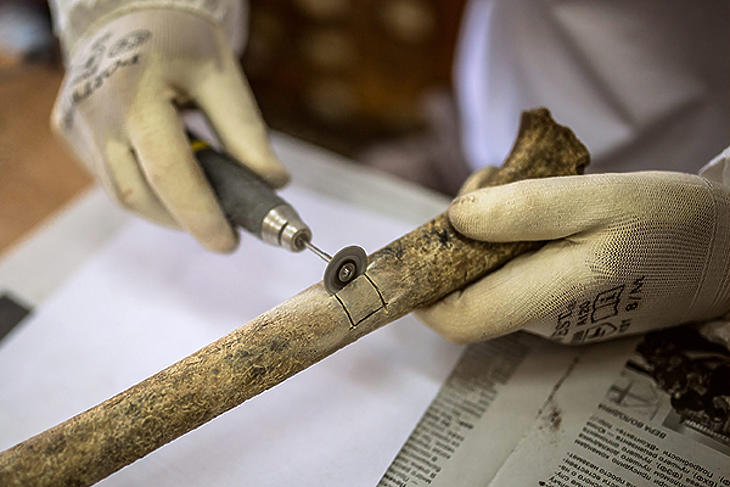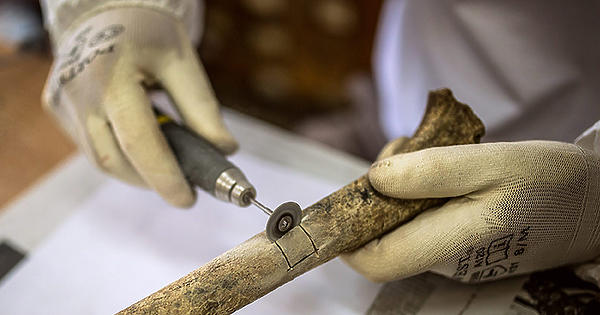András Kenessei invites you to a fun double trip From Sumer to Hungarian – From Hungarian? What is Hungarian? set of interviews. The texts, of course, guide us back to Hungarian prehistory, as well as to the years before the regime change, in which most conversations were written at the time.
The journalistic art historian historian has sought scholars with questions who, according to the state of science at the time, could say more on the subject, and if one is concerned that the theses as far as we know have been overturned in the meantime, do not. Of course, there have been new results and improvements since then, but there has been little change in the essential questions and answers to them over time. Additionally, to keep the word out of the front of the house, Kenessei has added two interviews this year to the end of the volume. The most recent developments have been reported in archaeal genetics, the fastest growing field of prehistoric research.
We know a lot, but not enough
So what is the answer to the questions in the title? Well, by reading the volume, we can say that Working in a variety of styles, taking a lot of hours, professional dedication, and sometimes all the money, he came to the conclusion that we had no idea.
Of course, in fact, the question is bad, that is, without an answer, at least by means of science.
“The historical problem is also a question of who the Hungarians or who the Sumerians are, and whether a race, a people, or a nation can be identified in its own history, or in a longer time series, or in its own ethnographic quality within momentary synchronicity. In this sense, of course , that is the most difficult question, and it is the most difficult question in any historical trial,” says Giza Komorochi, who has faced difficult questions during his career.
Then it better explains what the problem is, at least on one side. “What is people can only be answered within certain coordinates. One of these coordinates is geographical.” Although Komoróczy speaks of the Sumerians here, it is difficult to determine even in their case, and more so in the case of the pre-conquest Hungarian immigrants.
Topics for interviews in the volume (in order of their location in the book):
Janos McKay is an archaeologist
Géza Komoróczy is a historian and archaeologist
Ildiko Xidi is a historian and linguist
Istvan Fodor, archaeologist and museum
Kinga Eri is an archaeologist and anthropologist
István Mándolki is a philologist
Andras Runa Tas, Linguist and Orientalist
Balint Kasanad Archaeologist
Istvan Bona, an archaeologist
Gyula Laszlo dated
Orientalist Jeza Bethlinvalvi
Peter Hajji linguist
Archaeologist Laszlo Kovacs
Janos Sibos, Researcher in Popular Music
ad
=>
Anna Szécsényi-Nagy Archaeologist and geneticist
Balázs Gusztáv Mende is a paleontologist and anthropologist
Then there is the issue of time. How far will we go back? Here the snake also partially bites its tail, because if we search for the origin of a people, we come to when and on what basis people in ancient times considered themselves to belong to a society. If we cannot answer this question, how can we infer from the scattered sources and archaeological discoveries, what answers did they give to this question? According to Komoróczy, even at best, we can try to talk about who might be considered Sumerian or Hungarian in a particular place and time. More broadly, we can only give a very general answer. “We have to think of Sumer who said he was Sumer. Who spoke Sumerian, who was part of the Sumerian cultural community. As Indre Ade described in relation to the Hungarians: Who became a Hungarian by Mind, Order, Destiny, Intention, Proper.“
A nation lives in its language
Language is also a major issue in almost all other conversations in the folder. We can learn a lot about how and how the Hungarian language developed in the times before the conquest, as well as about ways to find out anything about it. Even a brief summary of this would exhaust the book’s recommendation framework, but the history of our language is surely more complex and multi-layered than summaries of simplifications learned in school and on the Internet. Even if this is not the current state of research, everyone should know the basic tools, lines of thought, limitations, and capabilities of the disciplines they deal with. Perhaps there will be less scope for pseudoscientists who assume a linguistic link based on some similar words, but there will also be something for those who believe science has long established that Hungarian is a Finno-Ugric language and therefore we have no more work to do.
In any case, it is certain that language was of paramount importance in maintaining the identity of the Hungarians who founded the Christian state and settled among the nomads of the steppes. “Language plays a huge role in the survival of the Hungarian people as an ethnic group” – says Istvan Fodor, former director general of the Hungarian National Museum, for example. It is a question of assumptions about what allowed this language to survive, while, for example, only the Scythians, Huns, Avars and Khazars melted with their language in the big melting pot.
Istvan Fodor highlights two factors: In the environment of the Hungarians, “it meant a military force that prevented the people from splitting and infiltrating the tribes. The other was that the Hungarian language was very foreign in this environment.”
Likewise the opinion, which seems to be accepted even in the highest circles today, that the key to the long-term “survival” of the Hungarians is force in the military sense and a clear separation from Western Europe, which is also manifested in customs and laws, could it be true? “How did we manage to survive in our language in a completely different linguistic environment? First of all, we declare that it is different in each era and for different reasons,” warns András Róna-Tas, who says that talking about this is completely different in the case of the Bedouins and the sedentary people.
But if it is so good at preserving the language of the Hungarians, what about folk music that goes back to similar ancient roots?
“Despite centuries of controversy, the origin of our Finno-Ugric language appears to be certain, while our folk music and folk songs, apart from some interaction, were not related to the songs of the surrounding peoples or the music of the Finno-Ugric peoples,” says Janos Sibos. “The closest analogy to Hungarian folk music will appear on the Pentaton of Inner Mongolia and the Volga Kama region.”
Of course, as Sipos points out, genetics, language, and popular music are subject to different laws. Researchers in different aspects of Hungarian prehistory must constantly pay attention to the results of other areas, but these results cannot be matched directly as jigsaw puzzle pieces, they can help you find where to look for missing pieces in your own collection.
Man-made science
So we’re back to the point where questions gather faster than answers. Anyone who hopes that exact science results will reverse the rate will be disappointed, too. I have a healthy doubt about this. Each science has its own explanatory environment, theoretical and methodological difficulties, problems and presuppositions. Not to mention that the natural sciences were invented by man, they created rules and conditions for them, and people cultivated and applied them, that is, they have the possibility of making mistakes and errors. For genetics (and archaeology), I would suggest that anyone interested in this issue read the Protocol on Procedures for Forensic Genetic IdentificationGusztáv Mende, who already in 2021 spoke about one of the fastest growing and up-to-date about the possibilities of archeology.
 Balázs Gusztáv Mende takes a sample from a find within the framework of the third Russian-Hungarian archaeological expedition in the Urals in 2015 (Photo: MTI / Mátyás Szöllősi)
Balázs Gusztáv Mende takes a sample from a find within the framework of the third Russian-Hungarian archaeological expedition in the Urals in 2015 (Photo: MTI / Mátyás Szöllősi)
Although Anna Szécsényi-Nagy, its interviewer and co-author, adds that “there are cases where archeology can disprove one theory or support another,” we shouldn’t expect easy facts from here either. But even if genetics has reached an unambiguous conclusion, it will not yet answer the question of the title of the book.
“If we compare our current database on populations from the time of the invasion with the populations living here today, and search for identities and overlaps, we can see that this marker represents only a small percentage of the Hungarian population today,” says Balázs Mende. .
Even in the absence of great answers, it is worth reading the book, if only because it is very short, and the scholars have adapted their answers to the level of the knowledgeable but non-expert interviewer (ie the current reader) that provokes good. Issues. Lots of little information while taking the jigsaw puzzle The reader is sure to have access to theories that clearly contradict the findings of science, and the answers so beautiful and so simple will immediately make you suspicious.. With this, “Who is Hungarian? What is Hungarian?” as a large part of our society and its political leadership.
It is no coincidence that András Kenessei plans to tackle a similar topic in a similar format after publishing this vomit book.
This line of thinking must continue to be investigated. Let’s say from the conquest to the foundation of the state, because in those hundred years so much has happened that we have no reliable source at all, only so much guesswork, fairy tales, legends. Scientifically proven evidence, with location and year specified: none. What we read in textbooks (and even university) is a national consensus, but not history.”
Andras Kenesy: From Sumer to Hungarian – From Hungarian? What is Hungarian? 169 pages, published by L’Harmattan, 2021













































